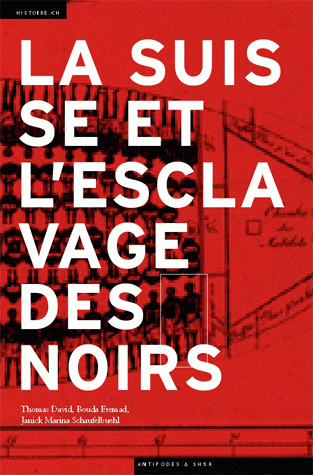Le Conseil adopte onze résolutions dont cinq sur les droits de l’homme en Palestine et dans les autres territoires arabes occupés
Conseil des droits de l’homme de l’#ONU, le 24 mars 2017
▻http://www.ohchr.org/FR/NewsEvents/Pages/DisplayNews.aspx?NewsID=21445&LangID=F#sthash.ZKaoENC8.dpuf
Concernant la #Palestine :
Par une autre résolution sur les droits de l’homme dans le #Golan syrien occupé (A/HRC/34/L.11), adoptée par adoptée par 26 voix pour, 3 contre (États-Unis, Royaume Uni et Togo) et 18 abstentions, le Conseil se déclare profondément préoccupé par les pratiques israéliennes dans le Golan syrien occupé, telles qu’elles sont décrites dans le rapport du Secrétaire général soumis à la présente session du Conseil.
Les États suivants ont voté en faveur de la résolution (26) : Afrique du Sud, Arabie saoudite, Bangladesh, Bolivie, Brésil, Burundi, Chine, Côte d’Ivoire, Cuba, Égypte, El Salvador, Émirats arabes unis, Équateur, Éthiopie, Ghana, Inde, Indonésie, Iraq, Kenya, Kirghizistan, Mongolie, Nigeria, Philippines, Qatar, Tunisie et Venezuela.
Les États suivants ont voté contre (3) : États-Unis, Royaume-Uni et Togo.
Les États suivants se sont abstenus (18) : Albanie, Allemagne, Belgique, Botswana, Congo, Croatie, Géorgie, Hongrie, Japon, Lettonie, Pays-Bas, Panama, Paraguay, Portugal, République de Corée, Rwanda, Slovénie et Suisse.
============================
Par une résolution visant à « Faire en sorte que les responsabilités soient établies et que justice soit faite pour toutes les violations du droit international dans le Territoire palestinien occupé, y compris Jérusalem-Est » (A/HRC/34/L.38), adoptée par 30 voix pour, 2 contre (États-Unis, Togo) et 15 abstentions, le Conseil invite instamment tous les États à promouvoir le respect du droit international et invite instamment toutes les Hautes Parties contractantes à la quatrième Convention de Genève à respecter et à faire respecter le droit international humanitaire dans le Territoire palestinien occupé, y compris Jérusalem-Est.
Les États suivants ont voté en faveur de la résolution (30) : Afrique du Sud, Arabie saoudite, Bangladesh, Belgique, Bolivie, Botswana, Brésil, Burundi, Chine, Congo, Côte d’Ivoire, Cuba, Égypte, El Salvador, Émirats arabes unis, Équateur, Ghana, Indonésie, Iraq, Kirghizistan, Mongolie, Nigeria, Philippines, Portugal, Qatar, République de Corée, Slovénie, Suisse, Tunisie et Venezuela.
Les États suivants ont voté contre (2) : États-Unis et Togo.
Les États suivants se sont abstenus (15) : Allemagne, Albanie, Croatie, Éthiopie, Géorgie, Hongrie, Inde, Japon, Kenya, Lettonie, Pays-Bas, Panama, Paraguay, Rwanda et Royaume-Uni.
===============================
Par une résolution sur le « droit du peuple palestinien à l’#autodétermination » (A/HRC/34/L.39), adoptée par 43 voix pour, 2 contre (États-Unis et Togo) et 2 abstentions (Panama et Paraguay), le Conseil confirme que le droit de souveraineté permanent du peuple palestinien sur ses richesses et ses ressources naturelles doit s’exercer dans l’intérêt du développement national et du bien-être de ce peuple et dans le cadre de la réalisation de son droit à l’autodétermination.
Les États suivants ont voté en faveur de la résolution (43) : Afrique du Sud, Albanie, Allemagne, Arabie saoudite, Bangladesh, Belgique, Bolivie, Botswana, Brésil, Burundi, Chine, Congo, Côte d’Ivoire, Croatie, Cuba, Égypte, El Salvador, Émirats arabes unis, Équateur, Éthiopie, Géorgie, Ghana, Hongrie, Inde, Indonésie, Iraq, Japon, Kenya, Kirghizistan, Lettonie, Mongolie, Nigeria, Pays-Bas, Philippines, Portugal, Qatar, République de Corée, Royaume-Uni, Rwanda, Slovénie, Suisse, Tunisie et Venezuela.
Les États suivants ont voté contre (2) : États-Unis et Togo.
Les États suivants se sont abstenus (2):Panama et Paraguay.
===================================
Aux termes d’une résolution sur la situation des droits de l’homme dans le Territoire palestinien occupé, y compris Jérusalem-Est (A/HRC/34/L.40), adoptée par 41 voix pour, 2 contre (États-Unis et Togo) et 4 abstentions (Rwanda, République du Congo, Panama et Paraguay), le Conseil se déclare profondément préoccupé par la situation des prisonniers et des détenus palestiniens, y compris des mineurs, dans les prisons et les centres de détention israéliens.
Les États suivants ont voté en faveur de la résolution (41) : Afrique du Sud, Albanie, Allemagne, Arabie saoudite, Bangladesh, Belgique, Bolivie, Botswana, Brésil, Burundi, Chine, Côte d’Ivoire, Croatie, Cuba, Égypte, El Salvador, Émirats arabes unis, Équateur, Éthiopie, Géorgie, Ghana, Hongrie, Inde, Indonésie, Iraq, Japon, Kenya, Kirghizistan, Lettonie, Mongolie, Nigeria, Pays-Bas, Philippines, Portugal, Qatar, République de Corée, Royaume-Uni, Slovénie, Suisse, Tunisie, Venezuela.
Les États suivants ont voté contre (2) : États-Unis et Togo.
Les États suivants se sont abstenus (4) : Congo, Panama, Paraguay et Rwanda.
=====================================
Par une résolution intitulée « Colonies de peuplement israéliennes dans le Territoire palestinien occupé, y compris Jérusalem-Est, et le Golan syrien occupé » (A/HRC/34/L.41/Rev.1, oralement révisée), adoptée par 36 voix pour, 2 contre (États-Unis et Togo) et 9 abstentions, le Conseil décide de tenir, à sa session de septembre 2017, une table ronde sur « les activités de colonisation israéliennes dans le Territoire palestinien occupé, y compris Jérusalem-Est », et demande au Haut-Commissariat de consulter les États et l’ensemble des parties prenantes.
Les États suivants ont voté en faveur de la résolution (36) : Afrique du Sud, Allemagne, Arabie saoudite, Bangladesh, Belgique, Bolivie, Botswana, Brésil, Burundi, Chine, Congo, Côte d’Ivoire, Cuba, Égypte, El Salvador, Émirats arabes unis, Équateur, , Éthiopie, Ghana, Inde, Indonésie, Iraq, Japon, Kenya, Kirghizistan, Mongolie, Nigeria, Pays-Bas, Philippines, Portugal, Qatar, République de Corée, Slovénie, Suisse, Tunisie et Venezuela.
Les États suivants ont voté contre (2) : États-Unis et Togo.
Les États suivants se sont abstenus (9) : Albanie, Croatie, Géorgie, Hongrie, Lettonie, Panama, Paraguay, Rwanda et Royaume-Uni.
========================================
Remarque : on voit que la politique d’#Israfrique commence à porter ses fruits avec le #Togo qui vote systématiquement pour israel...
Et pourquoi la France ne vote pas ?

































































